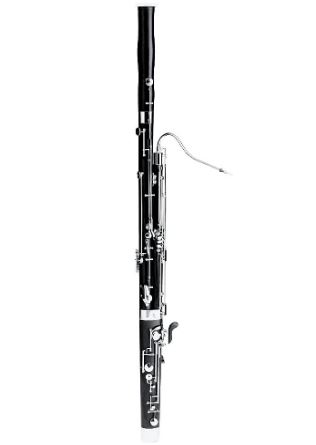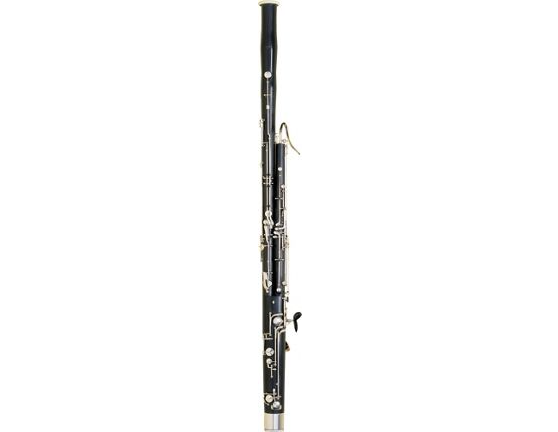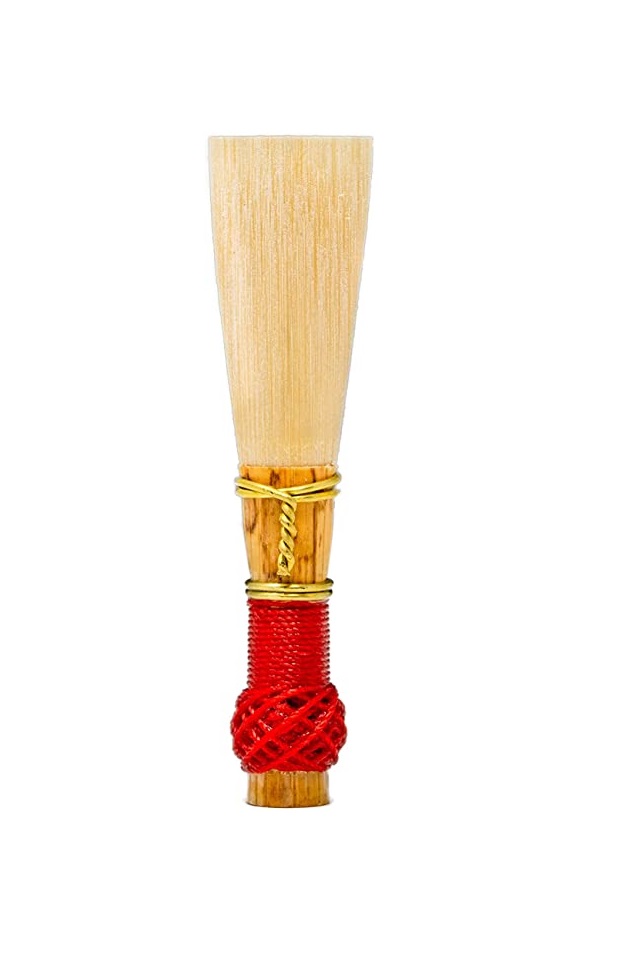- Top Trumpet Embouchure Techniques: Options for Beginners Through Professionals - October 12, 2022
- Is the Trumpet Hard to Learn? - September 30, 2022
- Best Leblanc Clarinet Models Guide: From Soprano to Contrabass - September 5, 2022
When musicians rehearsed the opening to Igor Stravinsky’s “Rite of Spring,” they heard a bassoon solo, meaning the soloist needed to be an expert on how to play the bassoon. The range of the solo was so high that the player asked if a saxophonist should play the solo instead.
But Stravinsky kept the part for the bassoon, and it remains one of the most famous orchestral solos for the instrument. And the piece even led to a riot after its premiere.
If you want to learn to play the bassoon and play solos like the opening of “Rite of Spring,” you should go for it. Here’s how.
At a Glance: Best Bassoons For Beginners
Product Image
Primary Rating / Price
Primary Button
What Is The Bassoon?
The bassoon is a woodwind instrument that uses two reeds (double reed) instead of a reed and a mouthpiece. Players make a sound by blowing air into the reeds to make them vibrate against each other. Bassoons have existed since the 17th century, and they developed from predecessors, such as the dulcian, sordone, and fagotto. Even now, the German word for “bassoon” is fagott, and the French use the spelling “basson.”
The bassoon has four joints plus a bocal and reed that you connect to assemble the instrument. Because of its size, you play it off to the right side of your body, and you use a seat strap or harness to help support the bassoon.
How To Choose A Bassoon
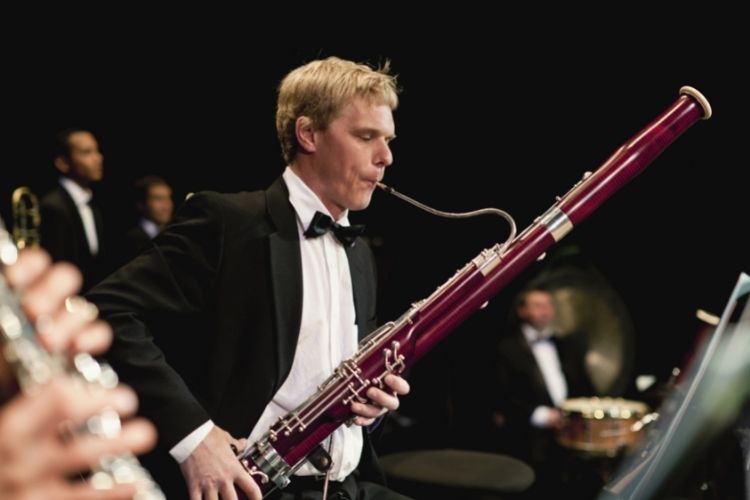
Choosing the right bassoon to use to learn is crucial. You need an instrument that isn’t too big for you and that you can get a good sound on.
If your child is learning or you have small hands or short arms, you may want to consider the size. Many bassoons can be hard for younger and smaller players to handle, but you may be able to find short-reach bassoons that help you reach the keys.
You should also consider the material of the bassoon. A lot of professional models are wood, but beginner bassoons use plastic, which can be more durable and less susceptible to extreme climates. Plastic bassoons can also be less expensive than wood models, but they’re still expensive. If you can’t afford to buy a bassoon, look into renting one from a music store or school.
Best Bassoons For Beginners
When you’re ready to buy a bassoon, you should consider a few options. There aren’t a ton of beginner bassoons on the market, but you still need to find a bassoon that works for you. As you consider materials, cost, and size, you can look for a good instrument. That way, you’ll be more successful as you learn how to play the bassoon.
Jupiter 363 Student Bassoon
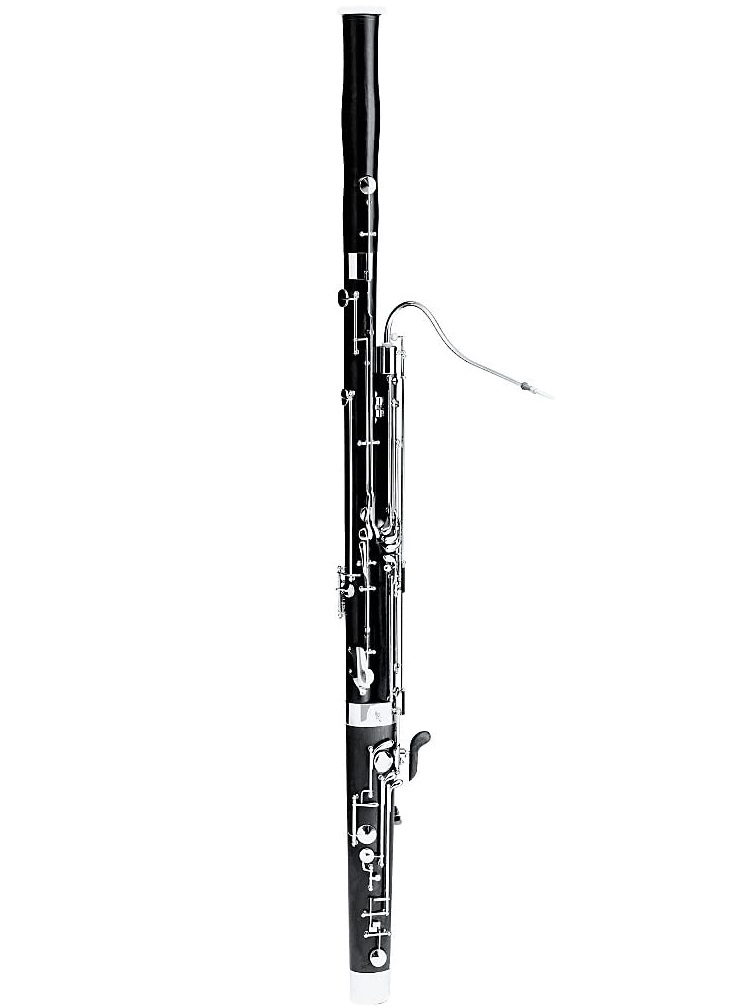
The Jupiter 363 Student Bassoon is an excellent instrument for when you start to play the bassoon. It offers a consistent sound, which helps you stay motivated to learn and improve.
An ABS resin body makes the instrument durable and great for playing indoors and outdoors. The bassoon also has extra features that you normally find on intermediate and professional models, so you can keep playing this model for years.
This bassoon has a full German key system, but its design is suitable for student bassoonists. You can use it to get a nice, warm sound, which is great for orchestra, band, and solo music.
Jupiter student 363 bassoon produces a warm, consistent sound. The keywork has many extras, such as a full German system, that you would expect only on an intermediate or professional level instrument.
Pros
- Good material
- Extra keys
- Nice sound
Cons
- Nothing that special about it
Fox Renard Model 41
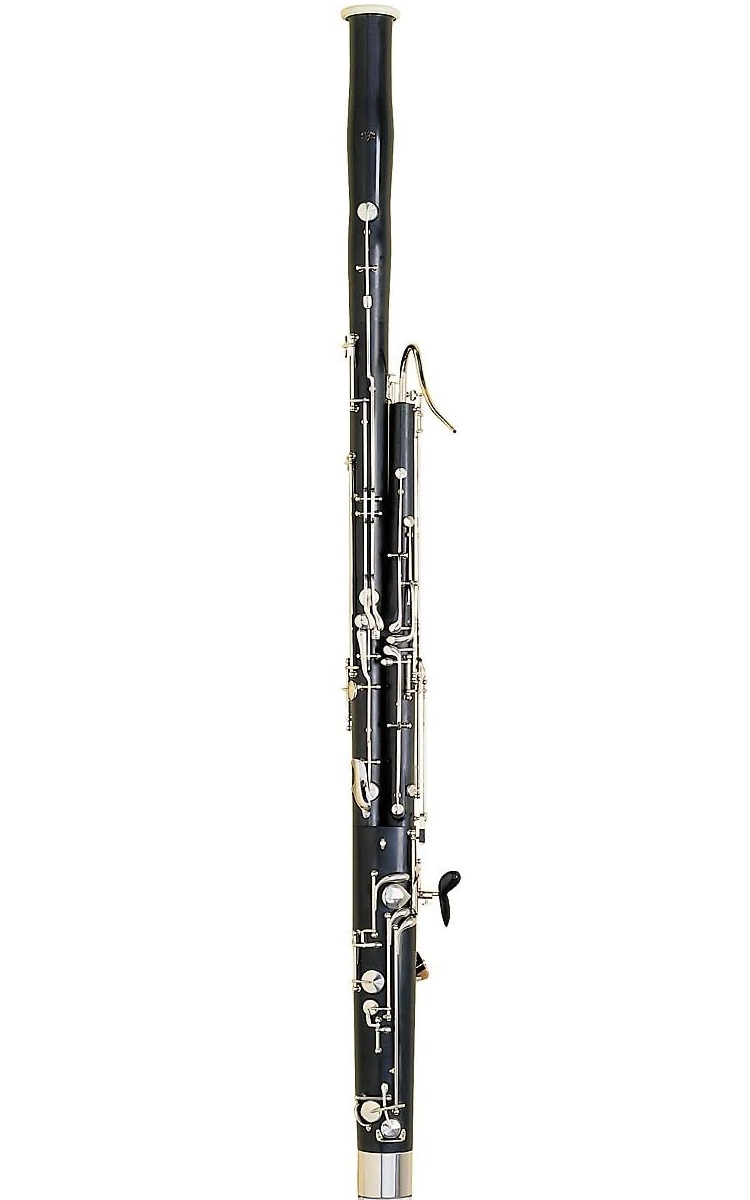
Fox is one of the best brands of bassoons, and the Renard Model 41 is great for beginners. It features a polypropylene body and a full German key system. The instrument also has a long bore, and there’s a plateau key (closed hole) to make it easier to play notes that require your left-hand third finger. There are also a few rollers to make it easy to move between keys.
With the bassoon, you’ll get two bocals, two reeds, and two cleaning swabs. You also get a clutch to help make your right hand comfortable, and it comes with a seat strap for extra support.
Key of C. Polypropylene body, full German system. All critical dimensions are machine finished. Nickel silver keys with nickel plating.
Pros
- Great design
- Extra keys and rollers
- Comes with everything you need
Cons
- Expensive
Fox Renard Model 51

Another excellent beginner bassoon to consider is the Fox Renard Model 51. It’s especially useful for younger players and anyone with smaller hands because it has a short-reach design. The design makes it easier to reach some of the keys without having to strain. Like the other Fox bassoon, this one has a few extra keys but not as many.
This model features a full German key system, so you can learn a lot of bassoon music on it. And you’ll get a lot of the same accessories as with the other Fox bassoon to help you get started.
Polypropylene body, "short reach" style. Critical dimensions are machine finished. Features a body lock, nickel silver keys with nickel plating, and a plateau key covering the D hole to reduce finger stretch.
Pros
- Great for smaller players
- Good design and materials
- Comes with what you need
Cons
- Doesn’t have as many keys as other bassoons
Best Bassoon Accessories
Unfortunately, having a great instrument isn’t quite enough for you to learn how to play the bassoon. You also need a few bassoon accessories so that you can make a sound and learn various notes and techniques.
When you buy a bassoon, make sure you get the following accessories if the instrument doesn’t include them. Then, you’ll be able to hit the ground running with your new instrument.
Reeds

Bassoon reeds are essential for every player. A good reed can make playing much easier, while a bad reed will make it impossible to get a good sound. As a beginner bassoonist, you can buy reeds that are ready to go. All you need to do is test the reed and make sure it works with your instrument.
Once you learn to play the bassoon, you may want to learn how to make reeds. That way, you can get the right shape and sound that you want. And if you can find or make cane reeds you like, consider a synthetic reed. These reeds are more expensive, but they’re durable, and they offer a more consistent response than traditional cane reeds.
The Jones Bassoon reed is one of the finest commercial bassoon reeds available. Each piece of cane is selected for exact diameter and wall thickness. Following a number of mechanized steps, the reeds are assembled by hand and the string is coated with the strongest lacquer available.
Reed Soaker Cup
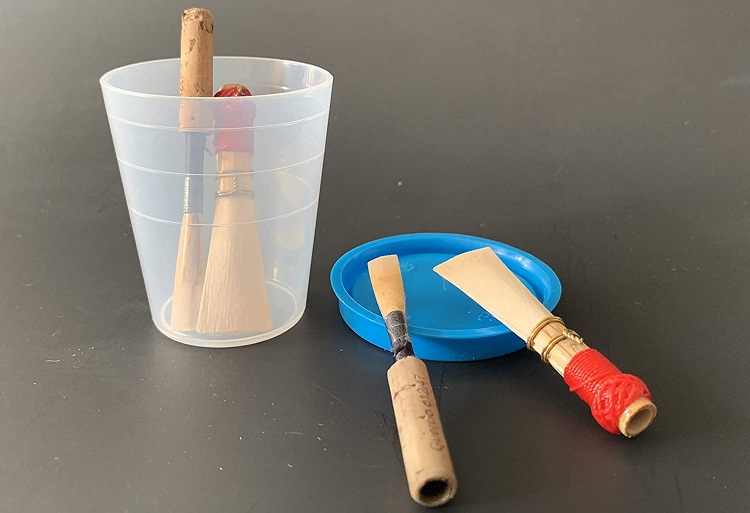
When I play clarinet or saxophone, I moisten my reed using my saliva. But that doesn’t work as well with double reeds for bassoon or oboe. The best way to prepare your reed for playing is by soaking it in water. A good reed soaker cup means you don’t have to hold the reed under running water. And you don’t have to worry about the entire reed falling into a bigger cup.
Reed soaker cups are just big enough to place your reed in so that the part with the thread doesn’t get wet. Then, you can soak the reed while you assemble your bassoon so that everything is ready to go at once. If you have an old prescription bottle, you can use that as long as it’s not too big. Either way, you need some tool to help soak your reeds.
The cup is made of PP material, safe and odorless. Reed123 Bassoon reed soaker cup is the perfect companion for any player.
Reed Case

You also need a good way to protect your reeds when you aren’t using them. Ideally, you’ll have a few reeds that you rotate between, but you also need to protect an individual reed when you aren’t playing. A good bassoon reed case has room for you to store a few reeds at a time. You can keep the reed case in your bassoon case for easy access, which can keep you from forgetting your reeds.
The reed case you choose should have some climate control to keep the reeds in good condition. And it should be easy to open and close.
Designed with brass hinges and special closure, make sure the case can be opened readily and closed tightly.
Seat Strap Or Harness
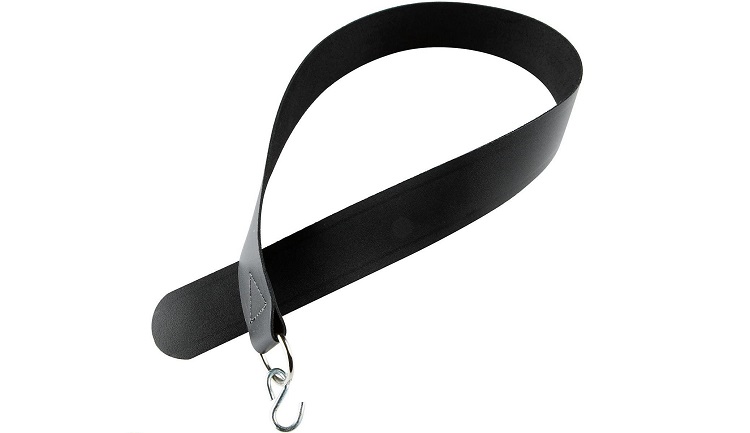
Because the bassoon is so big, it can be hard to support using just your hands. Many bassoon players sit when playing in a group or alone, so a seat strap is a great option. You may get a seat strap with your beginner bassoon, but not always. If you borrow a bassoon or buy a used one, it may not come with a good seat strap.
From one of the world's most recognized names in double reed accessories, Fox straps are both comfortable and durable.
Occasionally, you may want or need to stand when playing. In that case, you can use a harness to put some of the weight on your back and shoulders, similar to a saxophone neck strap.
Protec's deluxe harness for bassoon offers a comfortable and secure fit featuring a contoured ergonomic design with padded breathable mesh lining, quick adjustment pull tabs, and a strong open metal hook.
How To Play The Bassoon
Once you have everything you need, it’s time to learn the basics of how to play the bassoon. If you’ve learned another instrument before, you may expect some of the steps, but the bassoon is unique.
Even if you’ve played other woodwinds, the bassoon is very different, from the design to the notes you get with certain fingerings. Take your time as you learn the fundamentals so that you can make consistent progress and learn even more notes and songs.
Assemble The Bassoon
When you first open your case, you’ll see the bassoon is in a few pieces. Before you start putting them together, grab your reed soaker cup, put some fresh water in it, and let the reed soak. Then, assemble the bassoon with the following steps:
- Set your seat strap on the chair where you’ll sit or put the harness on.
- Hold the boot (the bottom end) with your left hand and use your right hand to add the wing joint (which has an end and a small hole for the bocal), making sure you align the keys.
- Take the bass joint and put it in the other hole on the boot joint, then make sure the keys line up.
- Use the lock near the bocal hole to connect the wing and bass joints.
- Grab the bell and add it to the top of the bass joint, then line up the rods.
- Hold the bocal at the sturdy point (near the end with the cork) and place it in the bocal hole at a 90-degree angle to the wing joint.
- Take your reed out of the soaker cup and place it over the end of the bocal.
- Connect the bassoon to your seat strap or harness.
Now, you’re ready to play the bassoon. Your first time, focus on blowing without worrying about where to put your fingers. When you’re done playing bassoon for the day, you can follow the steps backward to disassemble the instrument.
Forming An Embouchure
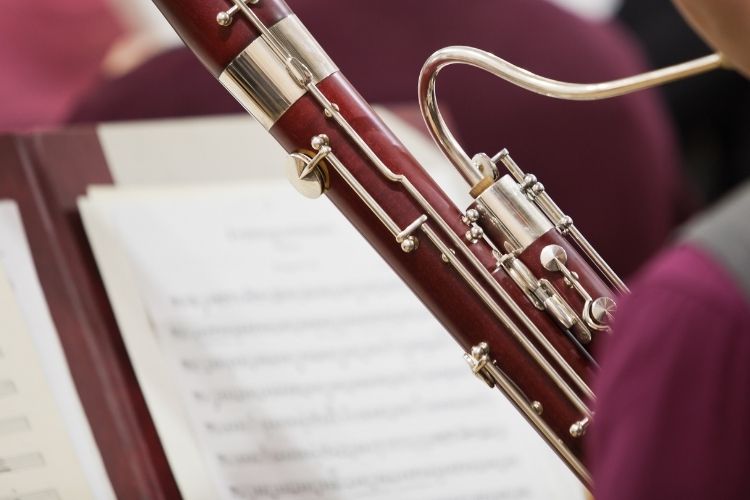
To get a good, consistent sound on the bassoon, you need to know how to form an embouchure, which is how you blow air. A bassoon embouchure is similar to that of a clarinet or saxophone, but there are a couple of differences. For one, you need to protect both reeds from your teeth. That means you need to cover your top and bottom teeth with both lips.
Like other reed instruments, a bassoon embouchure needs a complete seal so that air doesn’t escape. After you cover your teeth with your lips, place the reed in the middle and bring your lips in.
Consider practicing with just the reed until you get the hang of it so that you don’t have to worry about the whole bassoon. You should also try to relax so that you don’t add extra pressure that may keep the reeds from vibrating and making a sound.
Your First Notes
Now, you can start learning a few notes to play a few songs on the bassoon. If you’ve played the clarinet, the first few bassoon notes may look similar, but you don’t need to play the clarinet first. The first note you should learn is F in the bass clef staff. You’ll play this note by pressing the lowest left-hand thumb key.
Next, you can learn how to play E, which shares the same fingering as F. However, you’ll add the first finger of your left hand to make the note a half-step lower. Add the second finger on your left hand to play the note D, and add the third finger to play C. Keep your thumb on the same key for each of these notes.
Your First Song
After you learn a few notes, you can play a lot of songs on your bassoon. Hot Cross Buns is an excellent song to start with because it only uses three notes.
E D C
E D C
C C C C
D D D D
E D C
Mary Had a Little Lamb is another popular song that only requires three notes. You can practice the four notes in songs and on their own so that you can memorize them. Then, you’ll be able to learn more notes more easily.
Learn To Read Bass And Tenor Clef
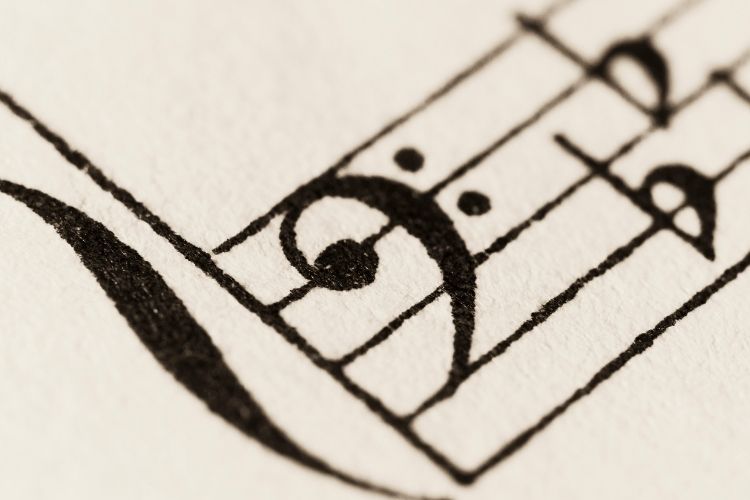
If you haven’t played an instrument before, you should learn how to read the bass clef, which the bassoon uses often. You should also learn the new clef if you’ve played any other woodwind, which all use the treble clef. The bassoon also uses the tenor clef for many of the higher notes. While you don’t need to memorize that clef now, you should start learning it to prepare for when you see it in bassoon music.
And if you haven’t learned to read the treble clef, it’s not a bad idea to start as well. It’s not that common in bassoon music, but it does happen for some of the highest notes, especially in French music.
Here’s what the bass clef looks like:

Here’s the tenor clef:

And here’s the treble clef:

Get A Good Book
You should get a bassoon method book to help you learn more notes and songs. While you can look up notes and songs online, a book can guide you in the right direction so that you learn everything in order. The Rubank Elementary Method is an excellent book to start with because it’s affordable and has great exercises. You can also use band method books if you play in a band with other instruments.
Once you finish a beginner book, most books are part of a series, so you can move on to an intermediate method. That way, you can keep following a system as you improve.
One of the most widely used series of methods for individual or like-instrument class instruction. Using a very well-rounded approach including scales, arpeggios, technical studies, studies for musicianship, and more.
Get A Teacher
Learning bassoon on your own is tough, so you really need to consider finding a private teacher. A private teacher can help you learn even more than you can with a good bassoon book.
Your teacher can help you learn how to assemble your bassoon and where to place your hands. They can also make reeds for you so that you have a good set of reeds to play, and they can teach you how to make reeds when you’re ready.
If you can’t find a teacher in your area, look online. Online lessons may not be as effective, but you’ll still have someone who can work with you on your individual goals and needs.
FAQs
Answer: It can be very difficult to play the bassoon for a few reasons. First, you need to use a lot of air to make a sound, especially as you learn the lowest notes.
You also need to learn a lot of different fingerings and what keys use. While your fingers use a key system to other woodwinds, bassoons have more thumb keys, which can be confusing.
As long as you’re motivated to learn the bassoon, you can push through the difficult parts.
Answer: If you have a lot of motivation and discipline, you can teach yourself how to play the bassoon. You can buy a bassoon book and watch video tutorials to learn, but you can only learn so much that way.
Finding a private teacher will help you fast-track your learning and avoid bad habits. That way, you can learn even more bassoon music in less time.
Answer: You don’t need to know how to play another instrument before you learn how to play the bassoon. If you’re big enough to hold the instrument, you can learn it without any musical background.
However, you may be able to learn the bassoon more easily if you’ve played another woodwind. Flute, clarinet, and saxophone can all teach you how to blow air and form an embouchure, and they’re usually easier to get than a bassoon.
Answer: Whether you’ve played another instrument or not, the ideal bassoon beginner is at least 12 years old. But younger students can start if they have large hands or if they find a bassoon with a short-reach design.
Either way, you need to be able to reach all of the keys without stressing your hands too much. That way, you’ll be able to remain comfortable as you practice.
Answer: The bassoon is expensive for a few reasons, such as its size and materials. Bassoons are much bigger than clarinets, flutes, and some saxophones, meaning they need more materials, which costs more.
Many beginner bassoons also have a strict quality control process to make sure they’re playable, which requires more time and money. And after you buy a bassoon, you’ll need to keep paying for reeds or reed-making supplies as reeds don’t last forever.
Answer: The bassoon is the most common member of its family, but you can also learn the contrabassoon or even the tenoroon. A contrabassoon plays one octave lower than the bassoon and is about twice as long.
Tenoroons are much rarer, but they’re smaller than bassoons, so they’re great for smaller players. If you can’t find a bassoon for your growing child, they can start on the tenoroon and switch to the bassoon when they’re big enough.
Final Note On How To Play The Bassoon
Learning how to play the bassoon is a long, complex process. You have to select the best instrument for you, get a few accessories, and take it a few notes at a time. When you want to learn an instrument quickly, that can be disappointing. But learning the bassoon can be rewarding because you get to play some excellent music, either on your own or with others.
If you decide to learn the bassoon, be patient with yourself and keep at it. You never know what you can accomplish.
Product Image
Primary Rating / Price
Primary Button




